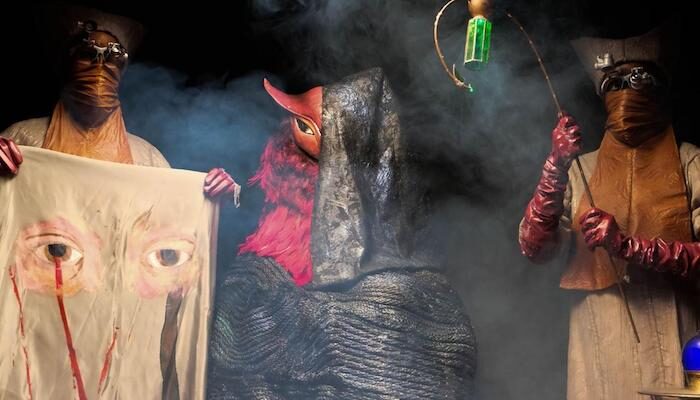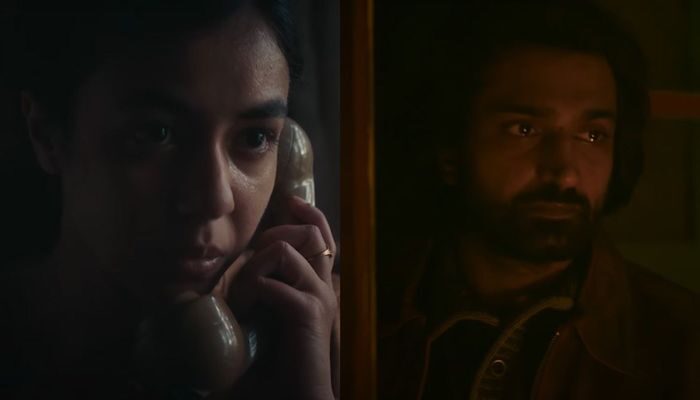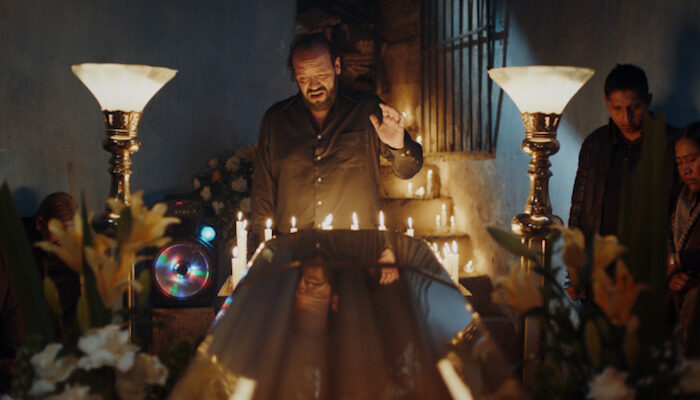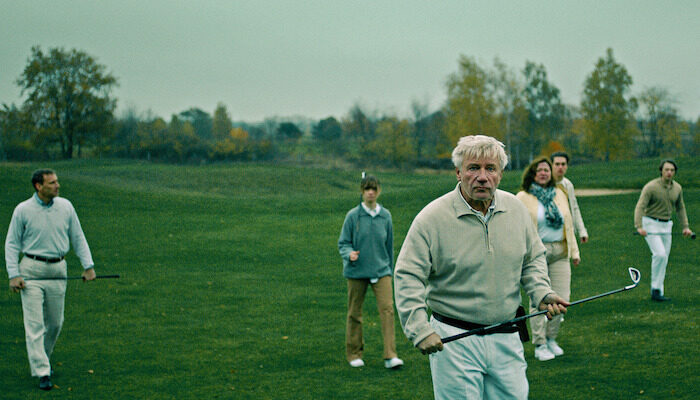Film Review: A WOUNDED FAWN: Modern Take on Classic Greek Tale Hits Close to the Mark [Tribeca 2022]
A Wounded Fawn Review
A Wounded Fawn (2022) Film Review from the 21st Annual Tribeca Film Festival, a movie directed by Travis Stevens, written by Nathan Faudree and Travis Stevens, and starring Sarah Lind, Josh Ruben, Malin Barr, Katie Huang, Laksmi Priyah Hedemark, Tanya Everett, Marshall Taylor Thurman, Neal Mayer, Nikki James, and Leandro Taub.
A Wounded Fawn retells, in slasher form, the ancient Greek tale of the Erinyes, otherwise known as The Furies, who pursue and taunt murderers until they die in torment.
Writer/director Travis Stevens puts a fresh spin, in large part, on this ancient vengeance tale. It is clear that he and his co-writer, Nathan Faudree, put a lot of thought and care into the plot points. The visual richness of the scenes lifts the film out of the initial slasher trope, sure enough. But there are times when it isn’t clear exactly where they are taking their ideas beyond the classical ones.
The film opens auspiciously on auctioning a beautiful ancient bronze sculpture of the Furies hunched over the figure of a young man fending them off, presumably Orestes, guilty of parricide. Each Fury, as some have described them, have their own typical visage: one with snakes for hair, another with a dog’s head, and the third in a ‘grisly hooded robe.’ The auctioneer recounts the myth with style to whet the appetite of the hopefuls ready to bid. At evening’s end, an agent, Kate Horna (Malin Barr), loses both her life and the sculpture to schmoozy Bruce Ernst (Josh Ruben), the young man she outbid, at the behest of a visage he calls the ‘Red Owl.’
We can suppose that Stevens and Faudree returns to the slasher trope in order to devise their own symbolism within familiar context. The mainstay of the film focuses on Meredith Tanning (Sarah Lind), a fashionable yuppie from the urbane art world. She prepares for a weekend getaway with her new beau who shows a lot of promise. When the guy shows up, it’s none other than Bruce himself. At first they seem well matched; he’s as yuppified as she. When she asks to stop to use the restroom, he asks her to wait; the cabin is not far ahead, he says.
That’s right — a cabin in the woods.
Well, that’s what Bruce calls it. It has a fireplace, all right, but that’s about as rustic as it gets. The furnishings are post-modern and spare. The artwork on the wall is sort of surrealist expressionism, redolent of a disturbed mind. The purloined Erinyes sculpture on the coffee table catches Meredith’s artful eye, dubious about Bruce’s claim that it’s a reproduction. She snoops a bit while Bruce cooks dinner, and sees the photo of Leonora, Bruce’s ex and the cabin’s previous owner.
Before long, fleeting images around the cabin unnerve Meredith to the point where she suggests they return to the city to continue their tryst. Of course, Bruce takes umbrage at once. Fortunately, Stevens doesn’t overwork the trope; he moves things right along. Once again the Red Owl appears, and in pretty short order Meredith joins the two ladies who preceded her, now decomposing in oil drums in the backyard.
From this point to the finish, Stevens uses his imagination to very good effect, on the whole. We’ve already surmised, of course, that the women were destined to become the Furies themselves. They pursue Bruce with all the frightful fervor of their ancient Greek counterparts, and Rubens chews some scenery.
The special effects morphing the women into the Erinyes of old are impressive. Special attention is paid to vivid colors and rich textures. Stevens manages good pacing by contrasting the mayhem with a couple of scenes where Meredith as Alecto quietly (but implacably) grills Bruce, unhinged and bloody, about his motives for murder. This is a thoughtful exchange that touches on some tenets of feminism. But Bruce is adamant; he insists that the Red Owl — an entity apart from himself — compels him to kill.
The Red Owl, a towering figure which features prominently from the start, seems to be a Stevens/Faudree creation through and through. There is nothing to suggest that an owl, red or otherwise, figures into any iteration of the original Furies legend. There is no substantial exposition to explain the origin of this specter; nothing to offset Bruce’s presentation as merely a stereotypical lunatic. But there is a hint of an intriguing story back there with respect to the ritual weapon he used for the killings: a sort of brass knuckles with spikes, tarnished to suggest antiquity.
As for the acting, Sarah Lind portrays Meredith as a reasonable, rational modern woman, but she also has a vulnerable undertone that is quite endearing. Josh Ruben does what he can with what he’s given as Bruce, and when not chewing the scenery, the scenes between him and Meredith have a natural flow.
Travis Stevens is one bold director, astute, not afraid to take risks, and confidently exploits the traditional legends and typical genres no more than he needs to, keeping it bare bones. As stated, he and his team produced some provocative, if somewhat obscure imagery. A word must be said about the ending, in which Meredith exacts her revenge. It’s punitive in a very classical sense, and it’s up to the viewer to decide if it goes on too long. I’m still on the fence. But regardless, it’s pretty damn clever.
Rating: 7.5/10
Leave your thoughts on this A Wounded Fawn review and the film below in the comments section. Readers seeking to support this type of content can visit our Patreon Page and become one of FilmBook’s patrons. Readers seeking more Tribeca Film Festival news can visit our Tribeca Film Festival Page, our Film Festival Page, and our Film Festival Facebook Page. Readers seeking more film reviews can visit our Movie Review Page, our Movie Review Twitter Page, and our Movie Review Facebook Page. Want up-to-the-minute notifications? FilmBook staff members publish articles by Email, Twitter, Facebook, Instagram, Tumblr, Pinterest, Reddit, and Flipboard.
Related Articles
FilmBook's Newsletter
Subscribe to FilmBook’s Daily Newsletter for the latest news!













